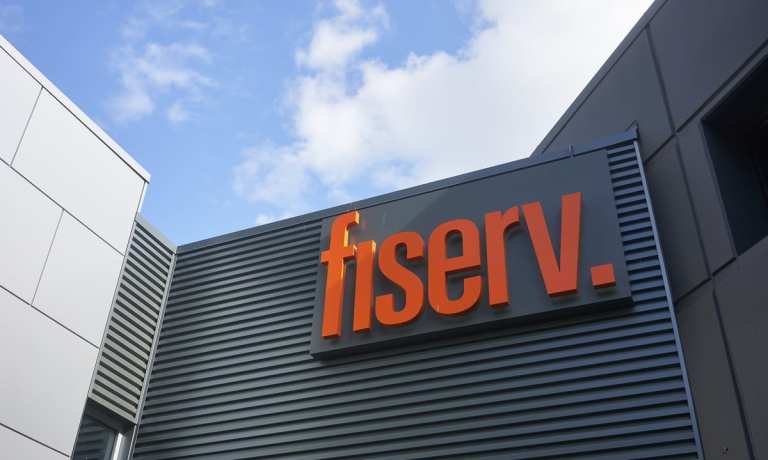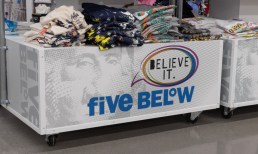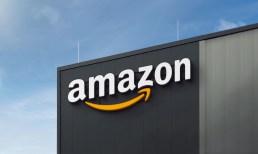Fiserv Grows eCommerce Payments Sector; Debuts QR Codes With PayPal

Fiserv is all-in on the digital-first economy. The company reported first-quarter results Tuesday (April 27) that showed resiliency in eCommerce and a major announcement on the use of QR codes as it aligns with new payments technology.
In terms of headline numbers, the company said earnings per share came in at $1.17, better than the Street by 4 pennies; revenues of $3.56 billion were just short of the Street at $3.57 billion, and where internal revenue growth (IRG) was up 4 percent. Supplemental materials released by the company show that, on a segment-by-segment basis, the Merchant Acceptance Segment saw 8 percent IRG, to $1.4 billion; CEO Frank Bisignano termed this an “exceptional result” given the continued headwinds of the global pandemic and restrictions imposed on areas such as Brazil, India and several countries in EMEA for much of the quarter. North America saw double-digit internal revenue growth rates in the quarter, on 13 percent global merchant volume growth.
The real action for the company came via digital payments and its omnichannel solutions. As Bisignano pointed out on the earnings call, the company announced that small and medium-sized businesses (SMBs) using Clover and large enterprises leveraging the Carat omnichannel commerce ecosystem can now accept payment via PayPal and Venmo through QR codes presented at the point of sale. Clover is the company’s SMB eCommerce payments, operations and data platform; Carat is its platform for larger merchants. Fiserv will also enable PayPal and Venmo payments via QR code at venues throughout the United States. The Phoenix Suns Arena, home of the NBA’s Phoenix Suns, will be among the first venues to enable the capability via Bypass point-of-sale software from Fiserv and Clover devices located throughout the arena.
“From shutting their physical doors to investing in omnichannel solutions their customers clamored for, we saw the resiliency in businesses as they navigated the pandemic,” said Frank Keller, senior vice president of commerce at PayPal. “By scaling PayPal and Venmo QR codes across an expansive physical footprint that includes the hundreds of thousands of small entrepreneurs running their business through the Clover platform, we are helping these businesses prepare for an unknown future by enabling touch-free payment technology that also drives customer loyalty, digital engagement and access to new customer segments.”
Bisignano sees the QR Code expansion as an important step in serving customers’ preferences for touch-free transactions. “We continue to see great momentum in the iSV space with Clover Connect,” said the CEO, “and in the first quarter we signed 42 new ISV partners.” Active merchants were up 38 percent in Q1. He pointed to gains in the mortgage software servicing verticals and digital retailers. Integration of acquisitions is largely complete, he said on the call, and revenue synergies stood at $265 million in the first quarter.
Clover And Omnichannel Growth
Management said on the conference call with analysts that eCommerce transactions were up 24 percent; omnichannel transaction growth was up 122 percent year on year, buoyed by order-ahead and pickup in store. Clover GPV was up 36 percent, Bisignano said on the call, to $141 billion annualized.
The FinTech segment saw adjusted IRG of 2 percent, to $736 million, as total mobile subscribers gained 12 percent, while mobile deposits surged by more than 30 percent. The Payments and Network segment saw 2 percent IRG growth. Debit transaction growth stood at 16 percent in the quarter. The firm more than doubled its number of clients on Zelle, which in turn helped to drive more than 100 percent growth in Zelle transactions in the quarters. During the call, the Fiserv executives pointed to strength in account-to-account and P2P payments.
Bisignano and CFO Robert Hau noted on the call that Clover and eCommerce growth is outpacing the overall market, with Clover seeing particular strength in the SMB cohort. ISV-focused efforts, said Bisignano, are seeing “great momentum” and ISV revenue growth was 34 percent in the quarter.
Looking ahead, Hau said that merchant acceptance business should be able to grow by at least 8 percent; the continued economic recovery in the United States (tied to vaccinations and stimulus payments) should help keep momentum intact and boosting overall internal revenue growth to a range of 9 percent to 12 percent.
Read More On Earnings:
- nCino Shares Slump Amid Slowing Growth in Cloud Banking and Mortgage Markets
- Lululemon Offers New Products and Events to Draw ‘Cautious Consumer’
- Petco Sharpens Focus on Digital Experience Amid Brand Reinvention
- CarParts.com Shifts Focus to New Customers, B2B and Mobile App



